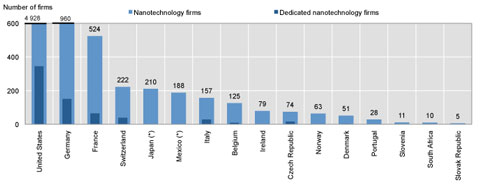Big thanks to David Bruggeman’s June 14, 2016 post (on his Pasco Phronesis blog) for news of Canada’s Fundamental Science Review, which was launched on June 13, 2016 (Note: Links have been removed),
The panel’s mandate focuses on support for fundamental research, research facilities, and platform technologies. This will include the three granting councils as well as other research organisations such as the Canada Foundation for Innovation. But it does not preclude the panel from considering and providing advice and recommendations on research matters outside of the mandate. The plan is to make the panel’s work and recommendations readily accessible to the public, either online or through any report or reports the panel produces. The panel’s recommendations to Minister Duncan are non-binding. …
…
As Ivan Semeniuk notes at The Globe and Mail [Canadian ‘national’ newspaper], the recent Nurse Review in the U.K., which led to the notable changes underway in the organization of that country’s research councils, seems comparable to this effort. But I think it worth noting the differences in the research systems of the two countries, and the different political pressures in play. It is not at all obvious to this writer that the Canadian review would necessarily lead to similar recommendations for a streamlining and reorganization of the Canadian research councils.
Longtime observers of the Canadian science funding scene may recall an earlier review held under the auspices of the Steven Harper Conservative government known as the ‘Review of Federal Support to R&D’. In fact it was focused on streamlining government funding for innovation and commercialization of science. The result was the 2011 report, ‘Innovation Canada: A Call to Action’, known popularly as the ‘Jenkins report’ after the panel chair, Tom Jenkins. (More about the report and responses to it can be found in my Oct. 21, 2011 post).
It’s nice to see that fundamental science is being given its turn for attention.
A June 13, 2016 Innovation, Science and Economic Development Canada news release provides more detail about the review and the panel guiding the review,
The Government of Canada understands the role of science in maintaining a thriving, clean economy and in providing the evidence for sound policy decisions. To deliver on this role however, federal programs that support Canada’s research efforts must be aligned in such a way as to ensure they are strategic, effective and focused on meeting the needs of scientists first.
That is why the Honourable Kirsty Duncan, Minister of Science, today launched an independent review of federal funding for fundamental science. The review will assess the program machinery that is currently in place to support science and scientists in Canada. The scope of the review includes the three granting councils [Social Sciences and Humanities Research Council {SSHRC}, Natural Sciences and Engineering Research Council {NSERC}, Canadian Institutes of Health Research {CIHR}] along with certain federally funded organizations such as the Canada Foundation for Innovation [CFI].
The review will be led by an independent panel of distinguished research leaders and innovators including Dr. David Naylor, former president of the University of Toronto and chair of the panel. Other panelists include:
- Dr. Robert Birgeneau, former chancellor, University of California, Berkeley
- Dr. Martha Crago, Vice-President, Research, Dalhousie University
- Mike Lazaridis, co-founder, Quantum Valley Investments
- Dr. Claudia Malacrida, Associate Vice-President, Research, University of Lethbridge
- Dr. Art McDonald, former director of the Sudbury Neutrino Laboratory, Nobel Laureate
- Dr. Martha Piper, interim president, University of British Columbia
- Dr. Rémi Quirion, Chief Scientist, Quebec
- Dr. Anne Wilson, Canadian Institute for Advanced Research Successful Societies Fellow and professor of psychology, Wilfrid Laurier University
The panel will spend the next six months seeking input from the research community and Canadians on how to optimize support for fundamental science in Canada. The panel will also survey international best practices for funding science and examine whether emerging researchers face barriers that prevent them from achieving career goals. It will look at what must be done to address these barriers and what more can be done to encourage Canada’s scientists to take on bold new research challenges. In addition to collecting input from the research community, the panel will also invite Canadians to participate in the review [emphasis mine] through an online consultation.
Ivan Semeniuk in his June 13, 2016 article for The Globe and Mail provides some interesting commentary about the possible outcomes of this review,
…
Depending on how its recommendations are taken on board, the panel could trigger anything from minor tweaks to a major rebuild of Ottawa’s science-funding apparatus, which this year is expected to funnel more than $3-billion to Canadian researchers and their labs.
…
Asked what she most wanted the panel to address, Ms. Duncan cited, as an example, the plight of younger researchers who, in many cases, must wait until they are in their 40s to get federal support.
Another is the risk of losing the benefits of previous investments when funding rules become restrictive, such as a 14-year limit on how long the government can support one of its existing networks of centres of excellence, or the dependence of research projects that are in the national interest on funding streams that require support from provincial governments or private sources.
The current system for proposing and reviewing research grants has been criticized as cumbersome and fraught with biases that mean the best science is not always supported.
In a paper published on Friday in the research journal PLOS One, Trent University biologist Dennis Murray and colleagues combed through 13,526 grant proposals to the Natural Sciences and Engineering Research Council between 2011 and 2014 and found significant evidence that researchers at smaller universities have consistently lower success rates.
Dr. Murray advocates for a more quantitative and impartial system of review to keep such biases at bay.
“There are too many opportunities for human impressions — conscious or unconscious — to make their way into the current evaluation process,” Dr. Murray said.
More broadly, researchers say the time is right for a look at a system that has grown convoluted and less suited to a world in which science is increasingly cross-disciplinary, and international research collaborations are more important.
…
If you have time, I encourage you to take a look at Semeniuk’s entire article as for the paper he mentions, here’s a link to and a citation for it,
Bias in Research Grant Evaluation Has Dire Consequences for Small Universities by Dennis L. Murray, Douglas Morris, Claude Lavoie, Peter R. Leavitt, Hugh MacIsaac, Michael E. J. Masson, & Marc-Andre Villard. PLOS http://dx.doi.org/10.1371/journal.pone.0155876 Published: June 3, 2016
This paper is open access.
Getting back to the review and more specifically, the panel, it’s good to see that four of the nine participants are women but other than that there doesn’t seem to be much diversity, i.e.,the majority (five) spring from the Ontario/Québec nexus of power and all the Canadians are from the southern part of country. Back to diversity, there is one business man, Mike Laziridis known primarily as the founder of Research in Motion (RIM or more popularly as the Blackberry company) making the panel not a wholly ivory tower affair. Still, I hope one day these panels will have members from the Canadian North and international members who come from somewhere other than the US, Great Britain, and/or if they’re having a particularly wild day, Germany. Here are some candidate countries for other places to look for panel members: Japan, Israel, China, South Korea, and India. Other possibilities include one of the South American countries, African countries, and/or the Middle Eastern countries.
Take the continent of Africa for example, where many countries seem to have successfully tackled one of the issues as we face. Specifically, the problem of encouraging young researchers. James Wilsdon notes some success in his April 9, 2016 post about Africa and science advice for the Guardian science blogs (Note: Links have been removed),
… some of the brightest talents and most exciting advances in African science were on display at the Next Einstein Forum. This landmark meeting, initiated by the African Institute of Mathematical Sciences, and held in Senegal, brought together almost 1000 researchers, entrepreneurs, businesses and policymakers from across Africa to celebrate and support the continent’s most promising early-career researchers.
A new cadre of fifteen Next Einstein Fellows and fifty-four ambassadors was announced, and the forum ended with an upbeat declaration of commitment to Africa’s role in world-leading, locally-relevant science. …
…
… UNESCO’s latest global audit of science, published at the end of 2015, concludes that African science is firmly on the rise. The number of journal articles published on the continent rose by sixty per cent from 2008 to 2014. Research investment rose from $12.9 billion in 2007 to $19.9 billion (US dollars) in 2013. Over the same period, R&D expenditure as a percentage of GDP nudged upwards from 0.36 per cent to 0.45 per cent, and the population of active researchers expanded from 150,000 to 190,000.
If you have the time, do read Wilsdon’s piece which covers some of the more difficult aspects facing the science communities in Africa and more.
In any event, it’s a bit late to bemoan the panel’s makeup but hopefully the government will take note for the future as I’m planning to include some of my critique in my comments to the panel in answer to their request for public comments.
You can find out more about Canada’s Fundamental Science Review here and you can easily participate here and/or go here to subscribe for updates.

